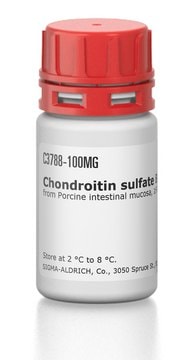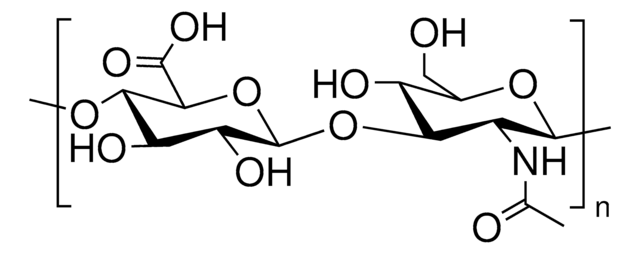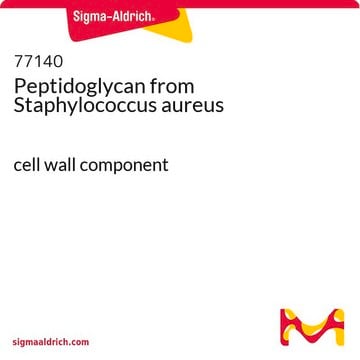The stability of stock solutions of this enzyme has not been evaluated. However, it is cited in Methods in Enzymology, 165, 3-7 (1988) that at concentrations greater than 2 mg of protein per ml it can be stored at -20 °C without loss of hemolytic titer.
H9395
α-Hemolysin from Staphylococcus aureus
lyophilized powder, Protein ~60 % by Lowry, ≥10,000 units/mg protein
Synonyme(s) :
α-Toxin
Sélectionner une taille de conditionnement
Sélectionner une taille de conditionnement
About This Item
Produits recommandés
Source biologique
Staphylococcus aureus
Niveau de qualité
Forme
lyophilized powder
Activité spécifique
≥10,000 units/mg protein
Contient
sodium citrate buffer as balance
Composition
Protein, ~60% Lowry
Solubilité
H2O: soluble 0.49-0.51 mg/mL
Numéro d'accès UniProt
Température de stockage
2-8°C
Informations sur le gène
Staphylococcus aureus ... SAOUHSC_01121(3920722)
Description générale
Application
- as a component of electrolyte solution for testing pore formation in lipid bilayer using electrophysiological measurements[2]
- to test its osteogenesis suppressive effects in bone marrow stromal cells (BMSCs)[3]
- in the preparation of α-hemolysin molecular imprinted polymer (MIP) for Biacore and surface plasmon resonance[4]
Actions biochimiques/physiologiques
Conditionnement
Définition de l'unité
Mention d'avertissement
Warning
Mentions de danger
Conseils de prudence
Classification des risques
Eye Irrit. 2 - Skin Irrit. 2 - STOT SE 2
Organes cibles
Lungs,Blood
Code de la classe de stockage
11 - Combustible Solids
Classe de danger pour l'eau (WGK)
WGK 3
Point d'éclair (°F)
Not applicable
Point d'éclair (°C)
Not applicable
Équipement de protection individuelle
Eyeshields, Gloves, type N95 (US)
Faites votre choix parmi les versions les plus récentes :
Certificats d'analyse (COA)
Vous ne trouvez pas la bonne version ?
Si vous avez besoin d'une version particulière, vous pouvez rechercher un certificat spécifique par le numéro de lot.
Déjà en possession de ce produit ?
Retrouvez la documentation relative aux produits que vous avez récemment achetés dans la Bibliothèque de documents.
Les clients ont également consulté
Contenu apparenté
Panorama des méthodes de lyse cellulaire et d'extraction protéique, comme la solubilisation par détergents, la lyse par congélation/décongélation, le choc osmotique, la sonication, la lyse cellulaire enzymatique et les techniques de fragmentation mécanique comme l'homogénéisation au Dounce, au Polytron ou au mortier et au pilon.
Cell lysis and protein extraction methods overview various techniques, from detergent solubilization to mechanical disruption, supporting research needs.
-
We suspended in the product H9395 in 12.5 ml of PBS (our usual water-based infection solvent), flash-froze the aliquots in liquid nitrogen, and stored the aliquots at -80 C. There was no apparent issue with resuspension in PBS vs water. However, we observed no hemolytic activity in our in vivo mouse study or an in vitro quantitative hemolysis assay performed with rabbit blood.
1 réponse-
Utile ?
-
Filtres actifs
Notre équipe de scientifiques dispose d'une expérience dans tous les secteurs de la recherche, notamment en sciences de la vie, science des matériaux, synthèse chimique, chromatographie, analyse et dans de nombreux autres domaines..
Contacter notre Service technique
















